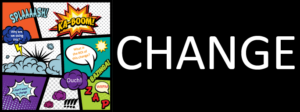Change Triage

What do you do when a change is in crisis? What about a change that has happened (a new system, an employee reorganization or you’ve moved to open, collaborative space) but the business benefits are not fully realized? It’s time for change triage rather than change management.
Triage is a term used in medical emergencies. It is a process for sorting injured people into groups based on their need for or likely benefit from immediate medical treatment. Triaging is not about “do we treat them, and when” but “is treating this patient the best use of our (limited) resources.”
Change Triage focuses on the business emergency of an unsuccessful change. It is the process of sorting through the change wreckage and using your limited resources to achieve the most impactful results.
Tips for triaging change:
- Clarify Success – Realign on the definition of success. Many changes that are less than successful have an unclear definition of success or a confused definition of success. When there is a lack of clarity about the outcome it’s no wonder that the change didn’t achieve intended outcomes. As they say, if you don’t know where you are going, any road will get your there. Get clear and then make sure that leadership agrees on a multidimensional definition of success.
- Define the GAP – get clear on the current state. What has and hasn’t happened? Who is impacted? How significant is the gap between what was intended and what has occurred? The larger the gap between where you are now and how you’ve defined success (the future state) the more resources and creativity are needed to close the gap.
- Diagnose – what must happen in order to close the gap and accomplish the success defined in step one? There are a variety of change interventions that could be appropriate. The right answer depends oncorrect diagnosis. We recommend Edgar Schein’s book, Humble Consulting to understand the best practices for a diagnosis that works.
- Take Action – in a triage situation there are limited resources (time and money) so the faster you can move into action, the more quickly you can begin to achieve the desired results.
When a change has occurred, it’s not too late to apply change triage and address the injuries that the change has inflicted. While change is seldom fatal to people’s lives, it can be fatal to organizational morale, productivity and performance. Don’t wait to triage a change that doesn’t live up to its intended outcomes.

